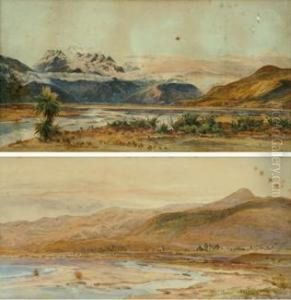Jenny Wimperis Paintings
Jenny Wimperis was a notable New Zealand-born artist whose career spanned the late 19th and early 20th centuries. She was born in 1865 in New Zealand, at a time when the country was still a British colony, and the art scene was in its nascent stages. Despite the limited opportunities in her homeland, Wimperis cultivated a passion for art from a young age, which would later take her across the world.
Her family moved to England when she was a child, and it was here that she received most of her art education. Wimperis was particularly known for her watercolor paintings, but her artistic endeavors also included oil painting and etching. She was influenced by the British watercolor tradition, which was known for its delicate and precise techniques, as well as by the Impressionist movement that emphasized light and color.
Wimperis became a member of the Society of Women Artists and the Royal Institute of Painters in Water Colours. Her works were exhibited at various prestigious venues, including the Royal Academy of Arts in London. She was part of a generation of female artists who were beginning to gain recognition and opportunities in the art world, a significant achievement considering the gender biases of the time.
Throughout her career, Jenny Wimperis produced a considerable body of work that captured the landscapes and rural life of England and occasionally of her native New Zealand. Her landscapes often featured the English countryside, where she managed to capture the changing seasons and the play of light with a charming, picturesque style. Her works are characterized by a sense of tranquility and a harmonious color palette, which appealed to the sensibilities of her contemporaries.
Jenny Wimperis passed away in 1949, leaving behind a legacy as one of the earlier New Zealand-born artists to make an impact on the British art scene. While she may not be as widely known as some of her contemporaries, her contributions to watercolor painting and her role as a woman artist during a pivotal time in art history remain significant.
